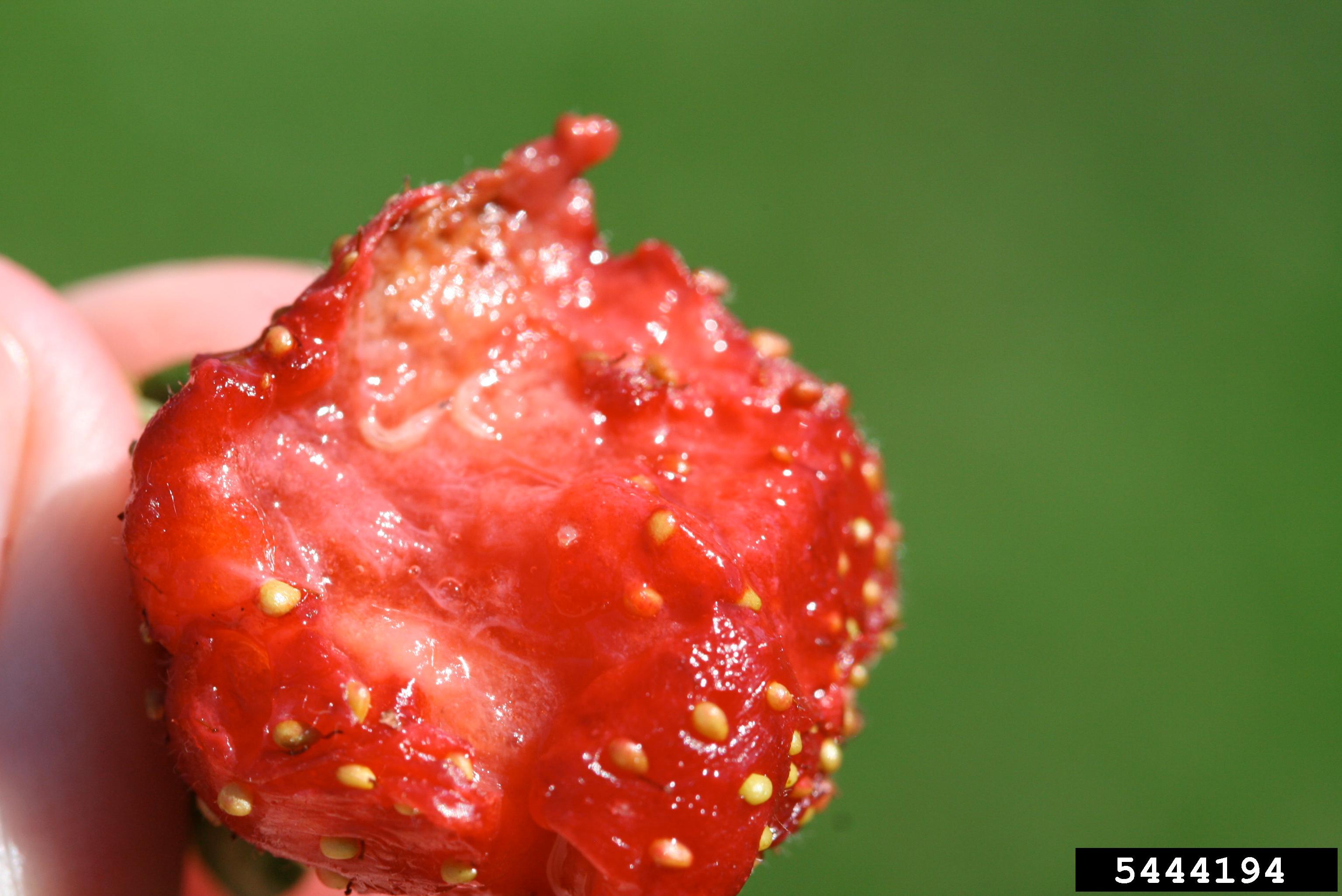
Spotted wing drosophila
| Primefact number | Edition | Published | Author |
|---|---|---|---|
| 1297 | First | Apr 2013 | Plant Biosecurity and Product Integrity |


Spotted wing drosophila (Drosophila suzukii) is an exotic plant pest. This insect pest is a serious threat to Australia’s cherry and berry fruit industries.
Spotted wing drosophila is a small fly similar in size to vinegar flies which sometimes gather around over-ripe fruit.
Notifiable status
Spotted wing drosophila (Drosophila suzukii) is a notifiable plant pest in NSW.
All notifiable plant pests and diseases must be reported within 1 working day. You can report notifiable plant pests and diseases by one of the following methods:
- Call the Exotic Plant Pest Hotline 1800 084 881
- Email biosecurity@dpi.nsw.gov.au with a clear photo and your contact details
- Complete an online form
A full list of notifiable plant pests and diseases can be found in Schedule 2 of the NSW Biosecurity Act 2015.
Damage
Most drosophila flies feed on damaged over-ripe fruit. Spotted wing drosophila (SWD) is a serious pest because it attacks healthy ripening fruit as well as damaged or split fruit.
Female SWD prefer to lay eggs in ripe fruit (Figure 1) but will also lay eggs in unripe, overripe and damaged fruit.
The female SWD penetrates the skin of soft-skinned fruit with a large serrated ovipositior. Eggs are laid just under the skin of the fruit creating a small puncture or ‘sting’ on the fruit surface.
Affected fruit does not show obvious symptoms of infestation until the flesh starts to break down leading to discolouration. White larvae are noticeable in the rotting flesh (Figure 2).
Description
Adults
Adult flies are 2–3 mm long with a wing span of 6–8 mm. Male SWD flies are typically smaller than SWD female flies.
Adult flies have red eyes a pale brown thorax and abdomen, and black stripes across the abdomen. Male SWD have a black spot on the end of each wing as well as two black combs on the front legs.
Female SWD have a saw-like ovipositor which can be seen when extended and is used to puncture the skin of fruit for egg laying.
Immature stages
Eggs of SWD are 0.6 mm in length and are oval shaped and white in colour.
Larvae are white to cream in colour, cylindrical and up to 6 mm long when fully grown (Figure 2).
Pupae are cylinder shaped, reddish-brown coloured and 2–3 mm in length. Pupae have two small projections on one end which are used for breathing.
Lifecycle
SWD overwinter as adult flies which then become active as temperatures rise. Female flies lay eggs in host fruit, the eggs hatch and the larvae develop and feed inside the fruit.
Larvae develop through three larval instars.
Eggs, larvae and pupae all vary in developmental time depending on environmental conditions. Generations over the summer months have the shortest development time.
Host range
Horticultural commodities affected by SWD include cherries, peaches, nectarines, apricots, plums, prunes, Asian pears, table grapes, blueberries, raspberries, blackberries, boysenberries and strawberries.
Preferred hosts are all softer-fleshed fruit.
Distribution
SWD is widely distributed in temperate and subtropical Asia.
SWD has a restricted distribution in India and Pakistan.
SWD has spread to Hawaii, North America, Central and South America.
SWD has also spread to the European countries of Italy, Spain and France.
Spread
SWD can only fly very short distances.
Human assisted transport rather than natural dispersion has spread this pest internationally.
Actions to minimise risks
Put in place biosecurity best practice actions to prevent entry, establishment and spread of pests and diseases:
- practice “Come clean, Go clean”
- ensure all staff and visitors are instructed in and adhere to your business management hygiene requirements
- source propagation material of a known high health status from reputable suppliers
- monitor your fruit crops regularly
- keep records

